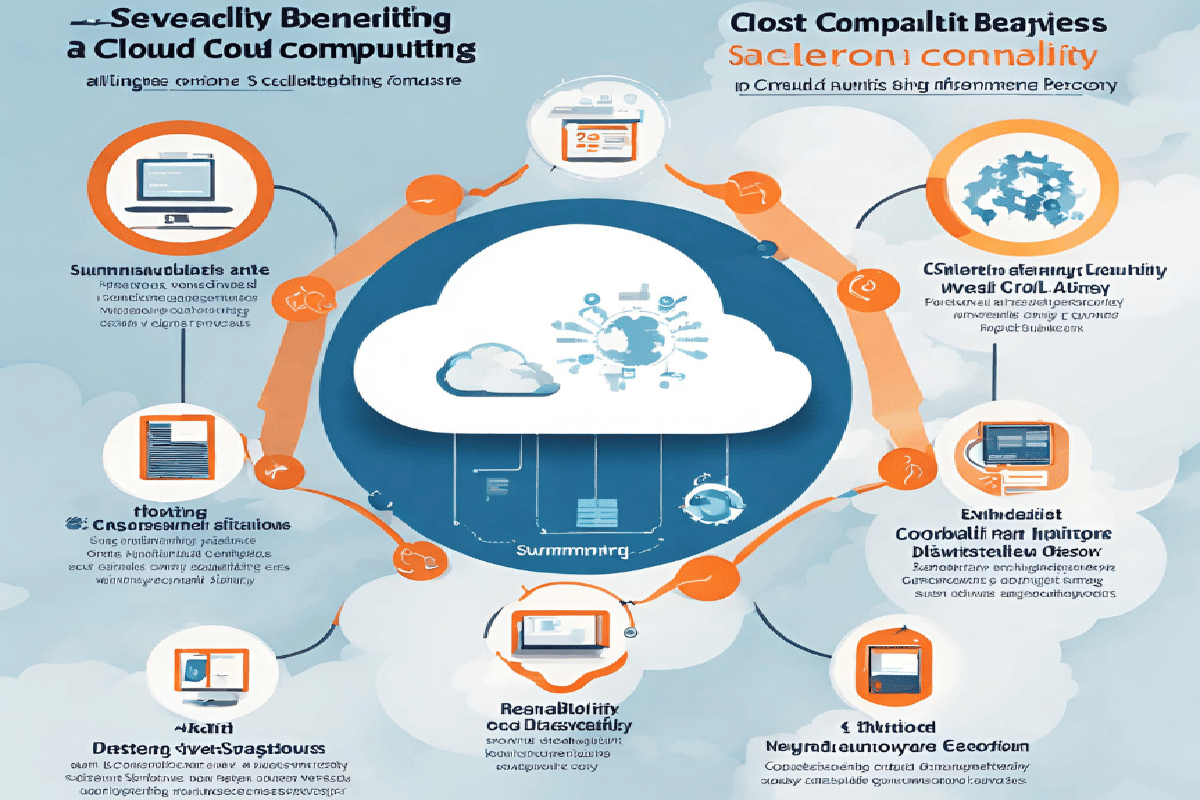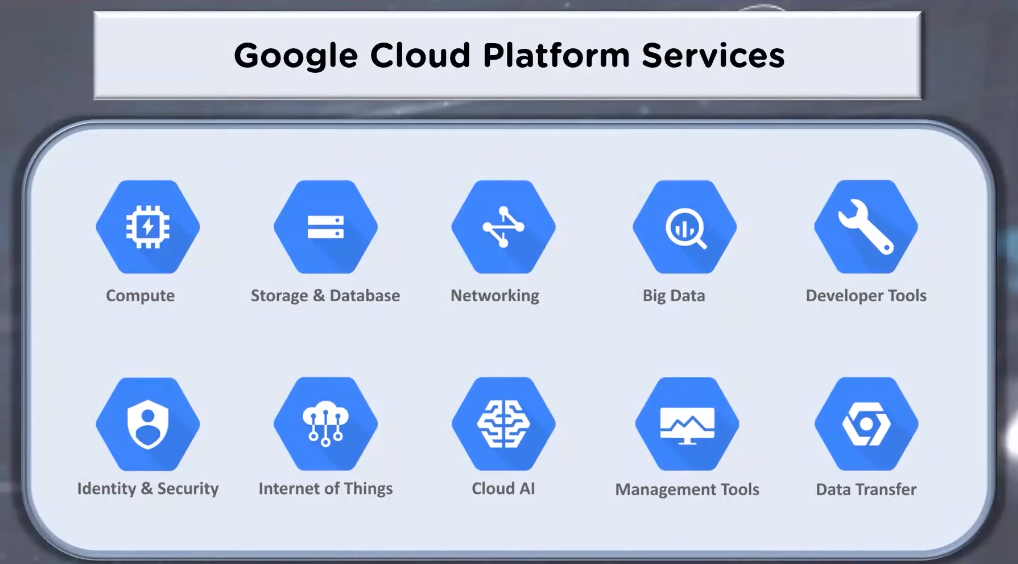Cloud computing is a technology that allows users to access and store data and applications over the internet, offering cost efficiency, scalability, and accessibility. It comes in three service models (IaaS, PaaS, SaaS) and four deployment models (public, private, hybrid, community). Its real-world applications span across industries like healthcare, e-commerce, education, and finance. While it brings immense benefits, users should also be mindful of security and data privacy considerations.
Definition of Cloud Computing

Cloud computing is the delivery of various services, such as storage, processing, networking, databases, and more, over the Internet. Instead of relying on local servers or personal devices to manage and store data, applications, or services, cloud computing allows businesses and individuals to access and utilize resources remotely through data centers maintained by third-party providers.
Historical Background
Cloud computing traces its roots back to the 1960s when the concept of time-sharing emerged. However, it gained significant momentum in the early 2000s with the advent of Amazon Web Services (AWS), which offered scalable computing power as a service. Since then, cloud computing has evolved rapidly, becoming an integral part of modern IT infrastructure.
Importance of Cloud Computing
Cloud computing has revolutionized the way organizations operate by providing them with the tools and resources needed to scale their operations, reduce costs, enhance security, and innovate at a faster pace. With cloud computing, businesses can focus on their core competencies without the burden of managing complex IT infrastructure.
Types of Cloud Computing:
Cloud computing can be categorized into four main types, each offering distinct advantages and use cases.
Public Cloud
A public cloud is a type of cloud service offered to multiple customers over the internet by third-party providers. It is accessible to anyone and provides cost-effective solutions for businesses of all sizes. Public cloud services include computing resources, storage, and various software applications. Popular public cloud providers include AWS, Microsoft Azure, and Google Cloud Platform.
Private Cloud
A private cloud is dedicated to a single organization and is hosted on-premises or by a third-party provider. It offers enhanced security, control, and customization options. Private clouds are suitable for businesses with strict data privacy and compliance requirements.
Hybrid Cloud
A hybrid cloud combines both public and private cloud environments. It allows data and applications to be shared between them seamlessly. This approach offers greater flexibility, enabling organizations to leverage the advantages of both public and private clouds while maintaining control over sensitive data.
Community Cloud
A community cloud is shared by multiple organizations with similar interests, such as regulatory compliance or industry-specific requirements. It offers a collaborative environment while still providing data isolation and control.
Key Benefits of Cloud Computing:

Cloud computing offers numerous advantages that drive its widespread adoption across industries.
Cost-Efficiency
Cloud computing reduces capital expenditure on hardware and maintenance, allowing businesses to pay only for the resources they consume. This pay-as-you-go model minimizes upfront costs and provides cost predictability.
Scalability
Cloud services can scale up or down based on demand, ensuring that businesses have the resources they need when they need them. This flexibility is especially valuable during traffic spikes or seasonal variations.
Flexibility
Cloud computing offers a wide range of services and configurations, allowing organizations to tailor their IT solutions to their specific needs. This flexibility supports diverse workloads and applications.
Security
Cloud providers invest heavily in security measures, often exceeding what individual organizations can achieve. This focus on security includes data encryption, regular updates, and robust access controls.
Disaster Recovery
Cloud-based disaster recovery solutions enable organizations to back up and recover data and applications quickly in the event of a catastrophe or data loss.
Cloud Service Models:
Cloud computing offers various service models, each catering to different requirements and levels of management control.
Infrastructure as a Service (IaaS)
IaaS provides virtualized computing resources over the internet, including servers, storage, and networking. Users have full control over the operating system and applications while the cloud provider manages the infrastructure.
Platform as a Service (PaaS)
PaaS delivers a platform and environment for developers to build, deploy, and manage applications. It abstracts the underlying infrastructure, allowing developers to focus solely on coding.
Software as a Service (SaaS)
SaaS offers software applications through the cloud on a subscription basis. Users can access these applications via web browsers, eliminating the need for installation and maintenance.
Function as a Service (FaaS)
FaaS, also known as serverless computing, allows developers to execute code in response to events without managing servers or infrastructure. It is highly scalable and cost-effective.
Cloud Deployment Models:
Organizations can choose from different cloud deployment models based on their specific needs and preferences.
Single Cloud
A single cloud deployment involves using a single cloud service provider to host all applications and data. It offers simplicity but may lack redundancy and disaster recovery options.
Multi-Cloud
The multi-cloud strategy involves using multiple cloud providers to host different services or applications. This approach increases redundancy, mitigates vendor lock-in, and offers greater flexibility.
Edge Computing
Edge computing brings computation closer to the data source, reducing latency and enabling real-time data processing. It is ideal for applications that require low latency, such as IoT devices.
Fog Computing
Fog computing extends the capabilities of edge computing by adding more processing power and storage to edge devices. It enables more complex data analysis at the edge of the network.
Cloud Providers:
Several leading cloud providers dominate the market, each offering a wide range of services and solutions.
Amazon Web Services (AWS)
AWS is one of the largest and most widely used cloud providers globally. It offers a vast array of services, including computing power, storage, databases, machine learning, and more.
Microsoft Azure
Microsoft Azure is known for its robust enterprise solutions and integration with Microsoft products. It provides a comprehensive suite of services, including AI, IoT, and analytics.
Google Cloud Platform (GCP)

GCP is known for its data analytics and machine learning capabilities. It offers a variety of services tailored to data-intensive applications.
IBM Cloud
IBM Cloud focuses on hybrid and multi-cloud solutions, emphasizing security and compliance. It provides a range of services, including AI, blockchain, and IoT.
Oracle Cloud
Oracle Cloud is designed for businesses that require high-performance databases and enterprise applications. It offers cloud services tailored to specific industries.
Cloud Trends and Future:
Cloud computing continues to evolve, with several key trends shaping its future.
Edge and Fog Computing
The adoption of edge and fog computing is expected to grow as organizations seek to process data closer to the source, enabling real-time analytics and reducing latency.
Serverless Computing
Serverless computing, or FaaS, is gaining popularity due to its cost-efficiency and scalability. It allows developers to focus on code rather than infrastructure management.
Artificial Intelligence and Machine Learning in the Cloud
Cloud providers are integrating AI and machine learning capabilities into their services, making it easier for businesses to leverage these technologies.
Quantum Computing and Cloud
As quantum computing advances, cloud providers are exploring ways to offer quantum computing services, opening up new possibilities in data processing and cryptography.
Cloud Computing in Various Fields:
Healthcare
Cloud computing enables healthcare providers to store and share patient records securely. It also supports telemedicine services, allowing doctors to diagnose and treat patients remotely.
E-commerce
E-commerce businesses leverage the cloud for their websites and online stores. This ensures high availability and performance during peak shopping seasons.
Education
Cloud-based learning platforms have become essential for remote and online education. They offer interactive tools for teachers and students to collaborate effectively.
Finance
Financial institutions rely on the cloud for data analysis, risk management, and customer relationship management. It enhances their ability to make informed decisions and provide personalized services.
Conclusion:
Cloud computing has emerged as a game-changing technology that continues to reshape the way we interact with data and applications. Its numerous advantages, including cost efficiency, scalability, and accessibility, make it indispensable for businesses of all sizes and individuals alike. While concerns about security and privacy persist, these issues can be effectively addressed through proactive measures and careful selection of cloud service providers.
Frequently Asked Questions:
What are the benefits of cloud computing?
Cloud computing offers several advantages, including cost efficiency, scalability, accessibility from anywhere, and robust disaster recovery options. It enables businesses to reduce capital expenditures and streamline operations.
In what industries is cloud computing commonly used?
Cloud computing has applications in various industries. It’s used in healthcare for secure patient data storage, e-commerce for high-performance websites, education for online learning platforms, and finance for data analysis and risk management, among others.
What about data privacy in cloud computing?
Data privacy is a significant concern when using cloud services. Users should be aware of the provider’s data privacy policies and compliance with regulations, such as GDPR, to ensure data remains confidential and compliant.
Can I switch between different cloud service models?
Yes, many cloud providers offer flexibility to switch between service models based on your needs. For example, you can start with SaaS for a particular application and later move to PaaS or IaaS for greater control and customization.
Can I host my own cloud infrastructure?
Yes, you can set up a private cloud infrastructure, either on-premises or using third-party providers. This allows you to have more control over your data and applications but comes with higher costs and maintenance responsibilities.
Is cloud computing suitable for small businesses?
Yes. Cloud computing is highly scalable and cost-effective, making it an excellent choice for small businesses. It allows them to access advanced technology and resources without significant upfront investments.
